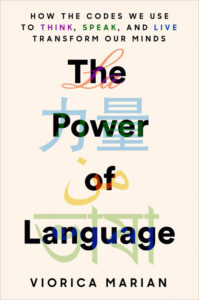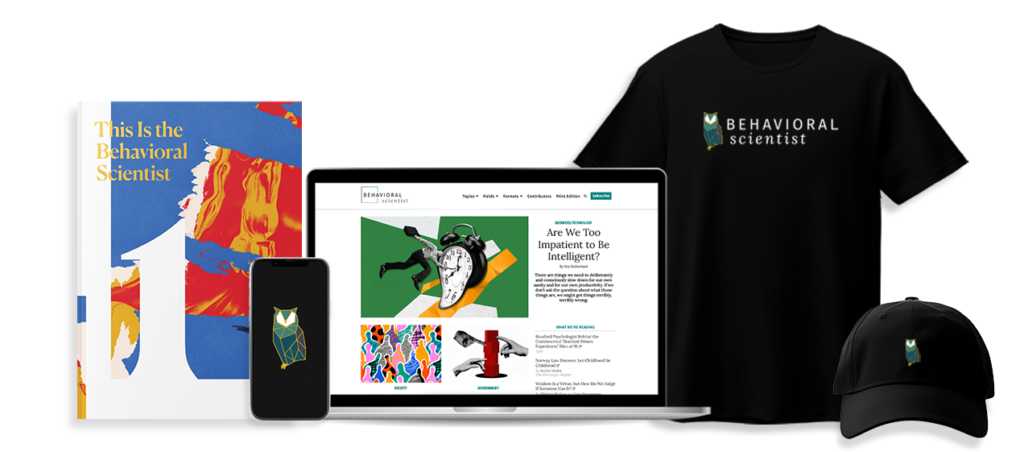When I first arrived in the United States as a teenager, I didn’t always know the meaning of the words that my American friends used. Sometimes I would infer or guess the meanings based on the context around us or based on other words in the sentence, and sometimes I would just ask what the word meant. One close friend would ask me, “What does it sound to you like this word means?” I would venture a guess based on how the word sounded. Oftentimes hilarity would ensue. But frequently my guess, based on context, would take me in the right direction. This kind of guessing has a long history.
My academic grandfather (advisor of my advisor), psychologist Wolfgang Köhler, first demonstrated sound symbolism in 1929 with what has since become widely known as the bouba–kiki effect.
The bouba–kiki effect refers to experiments in which people are presented with two shapes, like the ones in the figure below, and asked which one is a bouba and which one is a kiki. You try.

People are consistently more likely to decide that the rounded shape is a bouba and the jagged, spiky shape is a kiki. This finding holds for college students, older adults, and very young children, and for speakers of not only English but other languages as well. Köhler first conducted the experiment in Spanish on the island of Tenerife using the words baluba and takete, but the study has since been widely replicated. A preference for these associations has been found in infants as young as four months.
A study with Tamil speakers and with American college students found the preference rates are as high as 95 to 98 percent; across all studies the rates seem to be on average around 88 percent, lower but still significantly higher than chance. (These rates are lower in individuals with autism, around 56 percent.)
A neuroscience experiment using functional neuroimaging found that the prefrontal activation of the brain was stronger when there was a perceived mismatch between the name and the object (when bouba was paired with the spiky shape) than when there was a perceived match between the name and the object (when bouba was paired with the round shape), likely because people needed to devote more cognitive resources in the mismatch condition. Interestingly, the cortical activation differed not only in the frontal cortex responsible for higher-order cognition but also in the auditory and visual brain networks, suggesting that sound symbolism may be embedded in early stages of sensory processing as well.
It is not yet clear what is responsible for effects like these, nor whether they are present for other codes, like mathematics (which shape refers to a bigger number, 1 or 2? Infinity or zero?). Several hypotheses have been put forward. It has been suggested, for example, that the association is related to the shape of the mouth when producing the sounds—the more rounded shape of the lips when saying bouba and the more taut shape when saying kiki. It has also been suggested that the association is tied to the proportion of vowels and consonants and the phonemic qualities of the sounds in the words. It seems that individuals base sound–symbol judgments on the acoustic cues of the sounds, but exactly how they do so is unknown.
People are consistently more likely to decide that the rounded shape is a bouba and the jagged, spiky shape is a kiki. This finding holds for college students, older adults, and very young children, and for speakers of not only English but other languages as well.
A 1933 study found that English speakers correctly matched Japanese word pairs to their English antonym word pair translations 69 percent of the time. So, for example, when given the Japanese words heiwa and tatakai and the English words war and peace, they were able to correctly guess that heiwa means “peace” and tatakai means “war” more often than one would expect by chance.
If you would like, you can make a few guesses yourself, using word pairs from the original study. Which of these two words—tooi and chikai—would you guess means “far” and which one means “near”? (If you guessed that tooi means “far” and chikai means “near,” then you guessed correctly.) Which of these two words—mikata and teki—would you guess means “enemy” and which one means “friend”? (If you guessed that mikata means “friend” and teki means “enemy,” then you guessed correctly.) If you didn’t get many—or any—right, that is frankly what I would have expected before trying out the 25 pairs on the list myself. I would have expected the guesses to be correct at about the 50 percent (chance) level.
Which is why I decided to replicate this study in my lab in 2022. Monolingual English speakers were asked to match the meanings of 45 antonym pairs in nine different languages—French, Japanese, Mandarin, Polish, Romanian, Russian, Spanish, Thai, and Ukrainian—to their English translations. To our surprise, the likelihood of correctly matching antonym pairs in these languages to English translations (65 percent) was greater than predicted by chance (50 percent), even though the monolingual English participants were essentially guessing.
The accuracy was lowest for Mandarin (55 percent), Japanese (55 percent), and Russian (56 percent), followed by Thai (57 percent), Polish (58 percent), and Ukrainian (58 percent), and highest for Romanian (74 percent), French (79 percent), and Spanish (81 percent).
Most people, when hearing about the relationship between sound and meaning, think of onomatopoeia, which refers to words that themselves sound like the thing they describe, like the ticktock of a clock or the honk of a car. Words for animal noises are the most prevalent example of onomatopoeia. Curiously, these words differ across languages. In English, pigs oink–oink and dogs woof–woof, while in Russian, pigs hriu–hriu and dogs ghav–ghav, and in Romanian pigs koveets–koveets and dogs hum–hum. In Japanese, the same word is used to describe the sounds made by multiple animals—the verb naku is commonly used to refer to the sounds of dogs, cats, sheep, frogs, birds, and insects.
In English, pigs oink–oink and dogs woof–woof, while in Romanian pigs koveets–koveets and dogs hum–hum.
Direct evidence for the relationship between form and meaning can be found in nonspoken languages. Sign languages often represent the meaning of a word by visually tying it to an aspect of its meaning, either by the location or motion of the sign or by the hand shape or palm orientation. The sign for book, for example, resembles opening the pages of a book, and the sign for tea emulates swirling a teabag or a teaspoon in a cup. Gestures and signs are used as one of the first forms of communication during language development.
Beyond sign languages, the relationship between form and meaning can also be seen in logographic languages like Chinese, where the written form of words is made up of signs that oftentimes constitute other words on their own. The Chinese name for America (美国) includes two signs, one for beauty (美) and one for nation (国). The literal combination of these two signs can be translated to “nation of the beautiful” or “the beautiful country.” The Chinese words jealous (嫉妒) and slave (奴隶) both include the character for female (女) as one of their components. Do the individual meanings influence the mental representation of Chinese speakers’ actual translation? Does the form of a label—auditory or visual—influence how people mentally represent this concept and think about it?
The strongest connection to sound symbolism can be found in poetry. Using euphony (sounds that are perceived as pleasant, harmonious, comforting); alliteration (repetition of identical initial sounds); rhyme (repetition of similar final sounds); and other linguistic tools, poetry capitalizes on the idea that specific sounds evoke certain emotions and thoughts.
To what extent does a poet’s perception of the world shape their language, and to what extent does a poet’s language shape their perception? There is likely some of both, with a feedback loop between the two. A poet’s lyricism is a reflection of their cognition, but their lyricism also changes their cognition. In the words of Edgar Allan Poe, “Those who dream by day are cognizant of many things which escape those who dream only by night.”
Adapted excerpt of The Power of Language: How the Codes We Use to Think, Speak, and Live Transform Our Minds by Viorica Marian, published by Dutton, a division of Penguin Random House LLC. All rights reserved.







